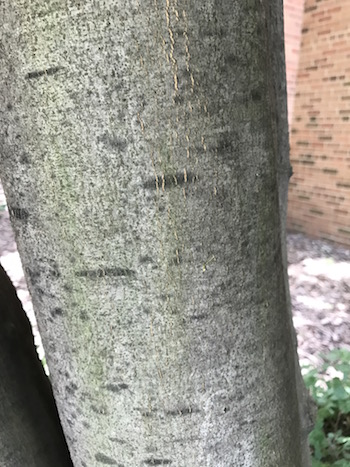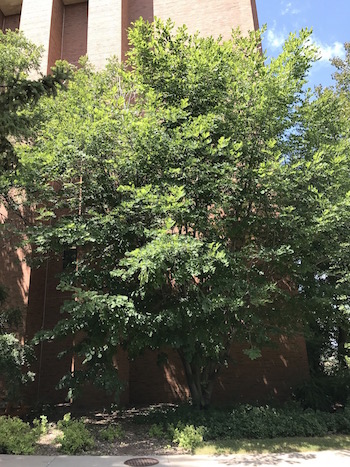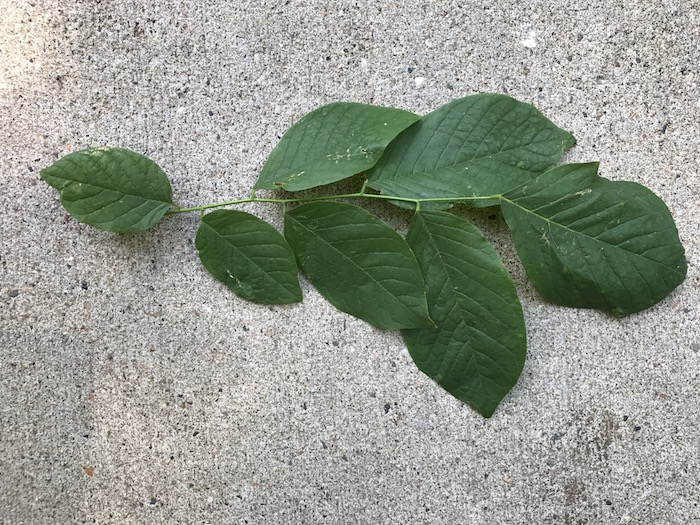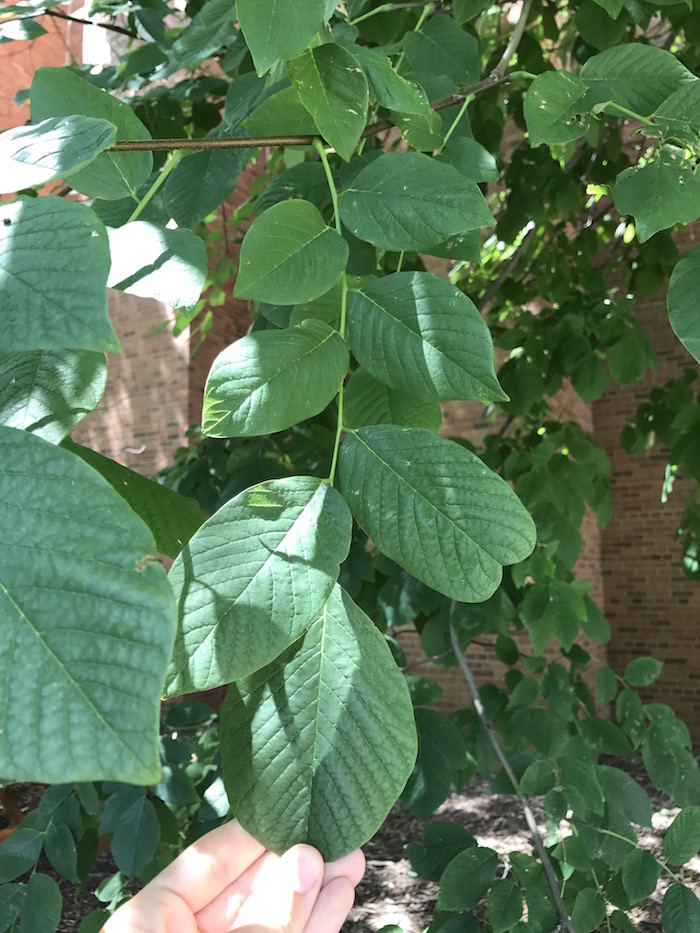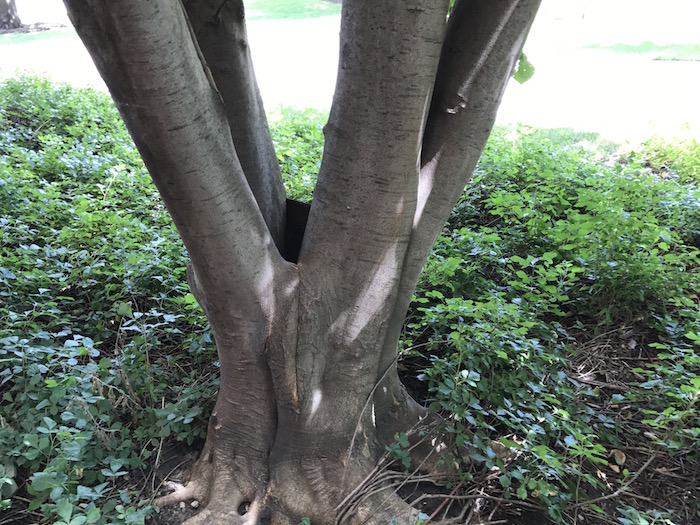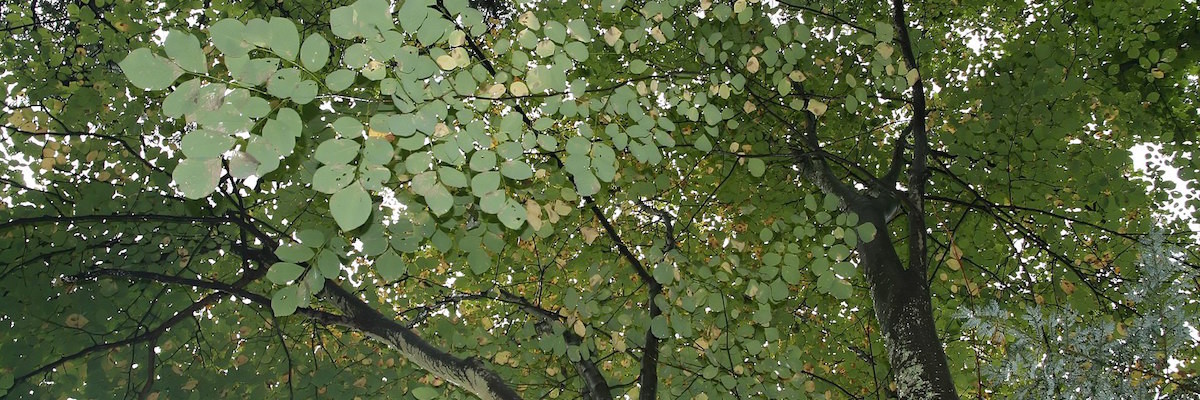
Description:
Yellowwood is a relatively rare tree noted for its white flowers and thick foliage. Leaves are compound, with 7-11 pinnate leaflets, and are bright green. Flowers are wisteria-like, large, drooping, pink and white, and very fragrant. Yellowwood only blooms prolifically every 2-3 years, and new trees may not bloom for 8-10 years. Female flowers develop into black seedpods in the fall. The bark is smooth and gray.
Yellowwood has distinct yellow heartwood, and has been used as a source of yellow dye. The tree has a very small native range, with small pockets in Kentucky, Tennessee, Missouri, Arkansas, North Carolina, Mississippi, and Alabama. Despite its southern native range, it is hardy to USDA hardiness zone 4, and can therefore survive in Minnesota. It is still rare here; as of 2017 there are only five yellowwoods planted in the Twin Cities campus of the University of Minnesota.
Issues:
If pruned during winter, yellowwoods can “bleed” severely; the tree should be pruned in summer. Yellowwoods are also suspectible to verticillium wilt, and various types of cold damage, such as sun scald.
Other Resources:
Eloise Butler Wildflower Garden
Photo Credit: Elektryczne Jabłko GDFL
